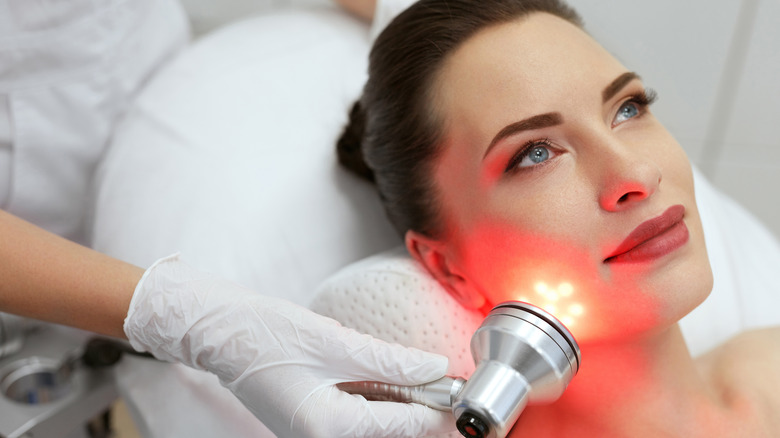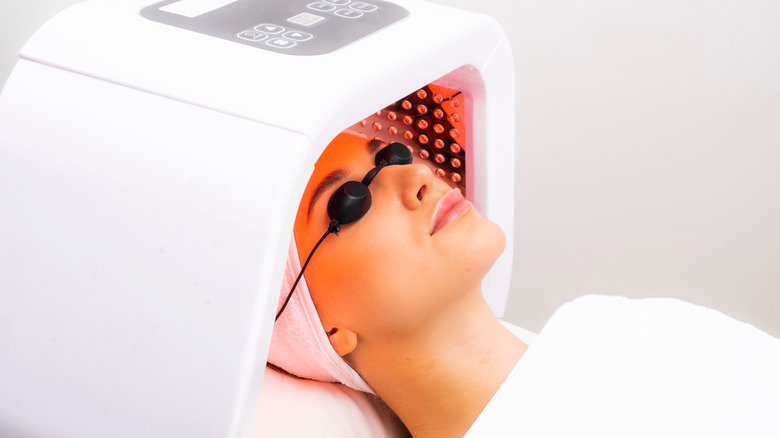The Health Benefits Of Red Light Therapy
Glowing healthy skin is always the talk of the town. Whether you're an A-list celebrity, researcher, practitioner, or love following a good do-it-yourself idea trending over the internet, we're all trying to find ways to enhance our skin, reduce acne, and combat aging.
Thankfully, there's one trending therapeutic technique that doesn't involve anything except light: red light therapy (RLT). This treatment emits low-wavelength red light to create more cellular energy to repair and rejuvenate various skin-related conditions (via Healthline). The idea, according to the journal Seminars in Cutaneous Medicine and Surgery, is to stimulate the mitochondria (the energy storehouse within cells) to absorb the red light, which in turn produces more energy molecules called adenosine triphosphate (ATP).
Evidence suggests the RLT promotes collagen production, reduces inflammation, and improves blood circulation. What's even more impressive is that experts claim it also improves acne, reduces stretch marks, reduces the effects of aging (i.e., wrinkles, age spots), and helps skin conditions such as eczema or psoriasis (per Cleveland Clinic).
Additionally, one randomized 2021 study found that RLT may improve scars. Not only may it improve the appearance of post-operative scars, but it may also improve scar pliability, which blesses that recovering body part with a little more wiggle room.
Other potential benefits of red light therapy
Red light therapy is often used in skin care. However, it may potentially offer other health benefits.
At the top of the list are its anti-inflammatory effects. While the mechanism is still being studied, a review in AIMS Biophysics points out that low-level light specifically reduces inflammation in the lungs, brain, spinal cord, and abdominal fat, as well as in wounds. Many serious health conditions stem from inflammation in the body, so RLT may help treat these.
Beyond the anti-inflammatory benefits of RLT, lies even more therapeutic benefits. For instance, if you're looking for different approaches to increase hair growth, low-level red light may be able to help. One 2016 study examined the effects of RLT on participants with alopecia and found it helped improve hair density. The researchers noted that in order for the red light to work, the wavelength of the scanner must be between 665 nanometers and 808 nanometers.
When it comes to bone recovery and pain, RLT is also promising, says Medical News Today. According to a 2017 review, it may be effective in reducing pain from musculoskeletal disorders; when clinicians follow the dosage recommendations, this may enhance its effectiveness.
However, while these studies show there is a potential for RLT to be used in certain applications, further evidence is needed. Nevertheless, experts agree the research is promising and RLT can be a healthy part of a skincare routine (via Medical News Today).


